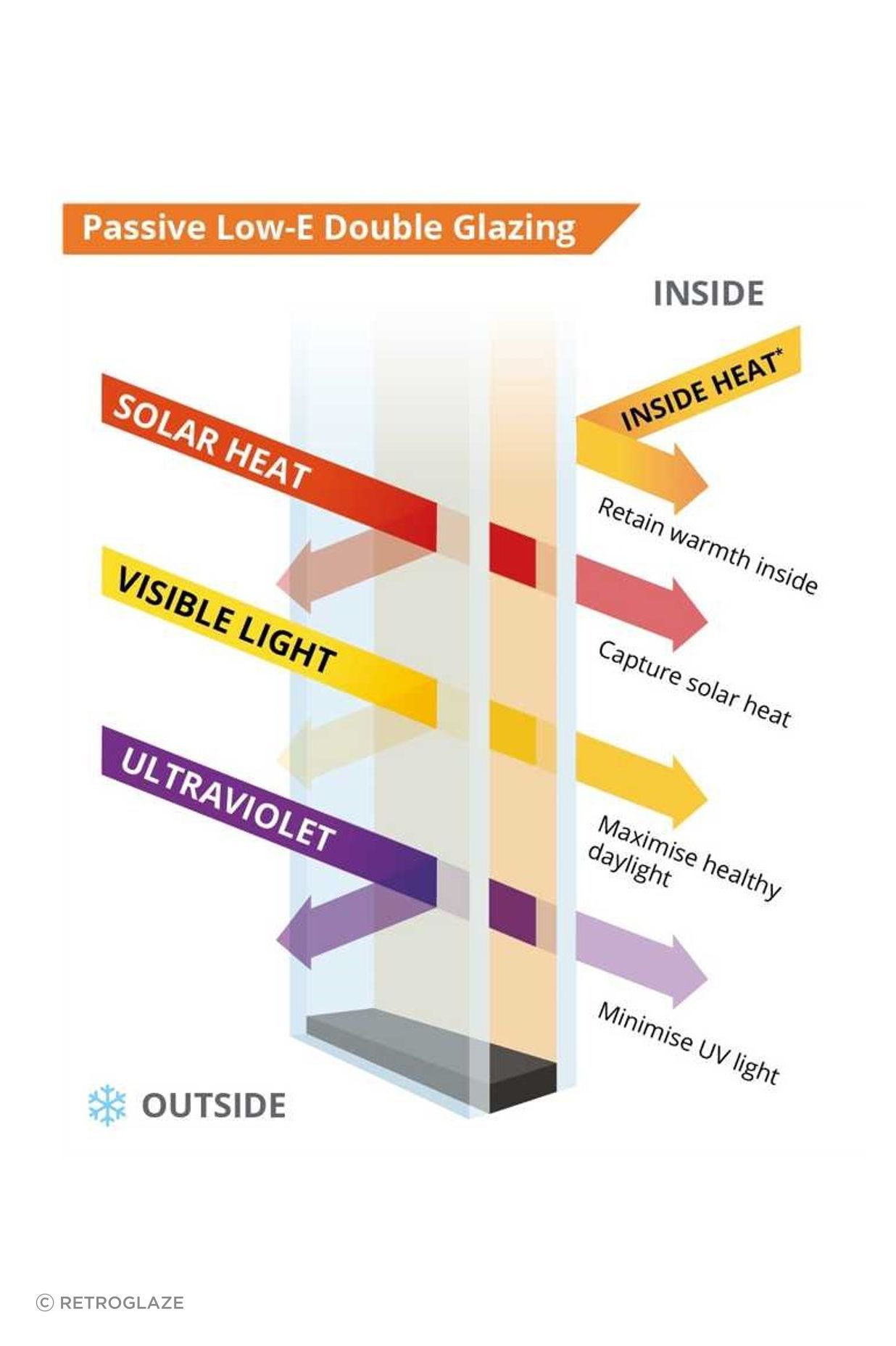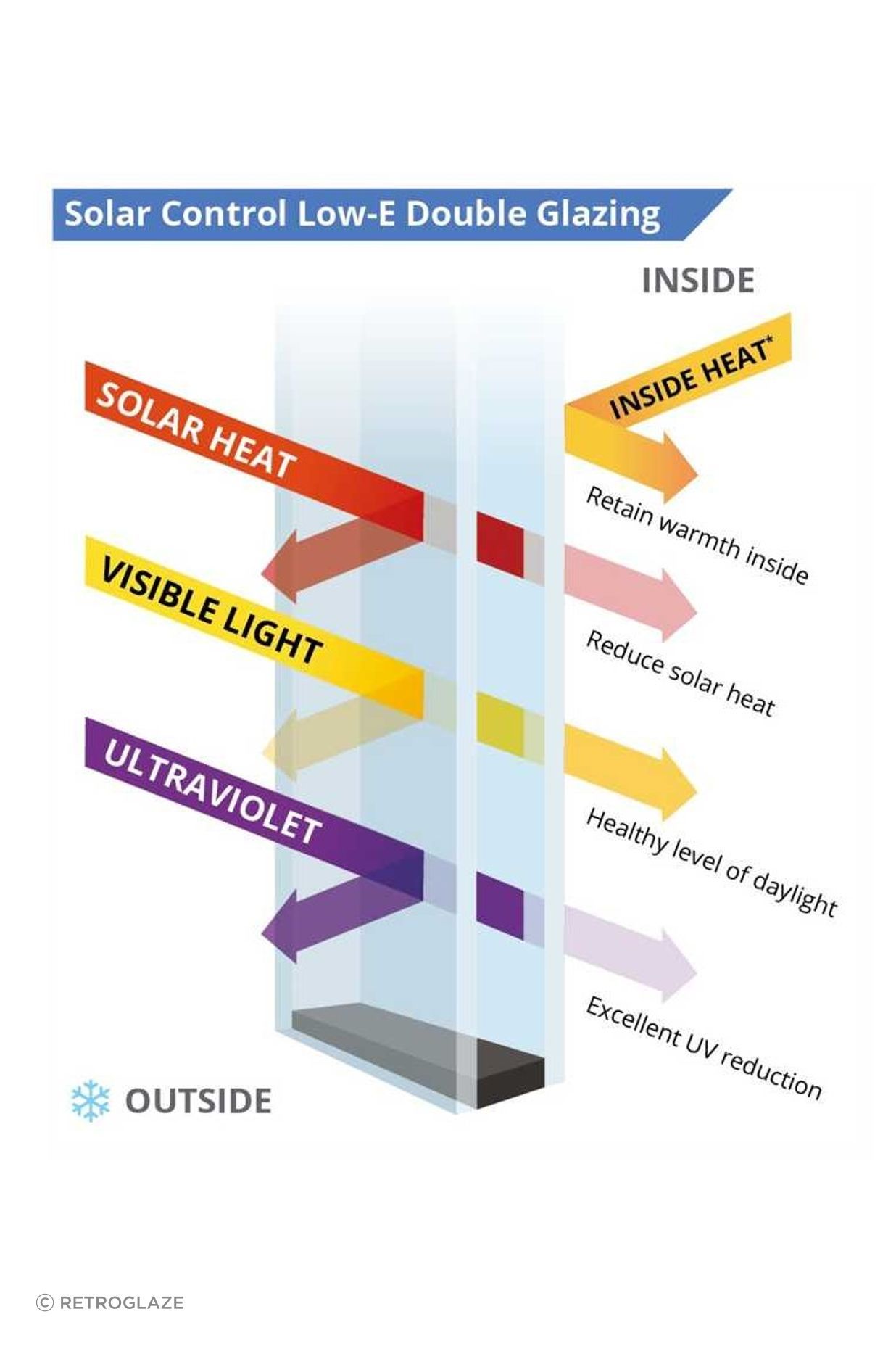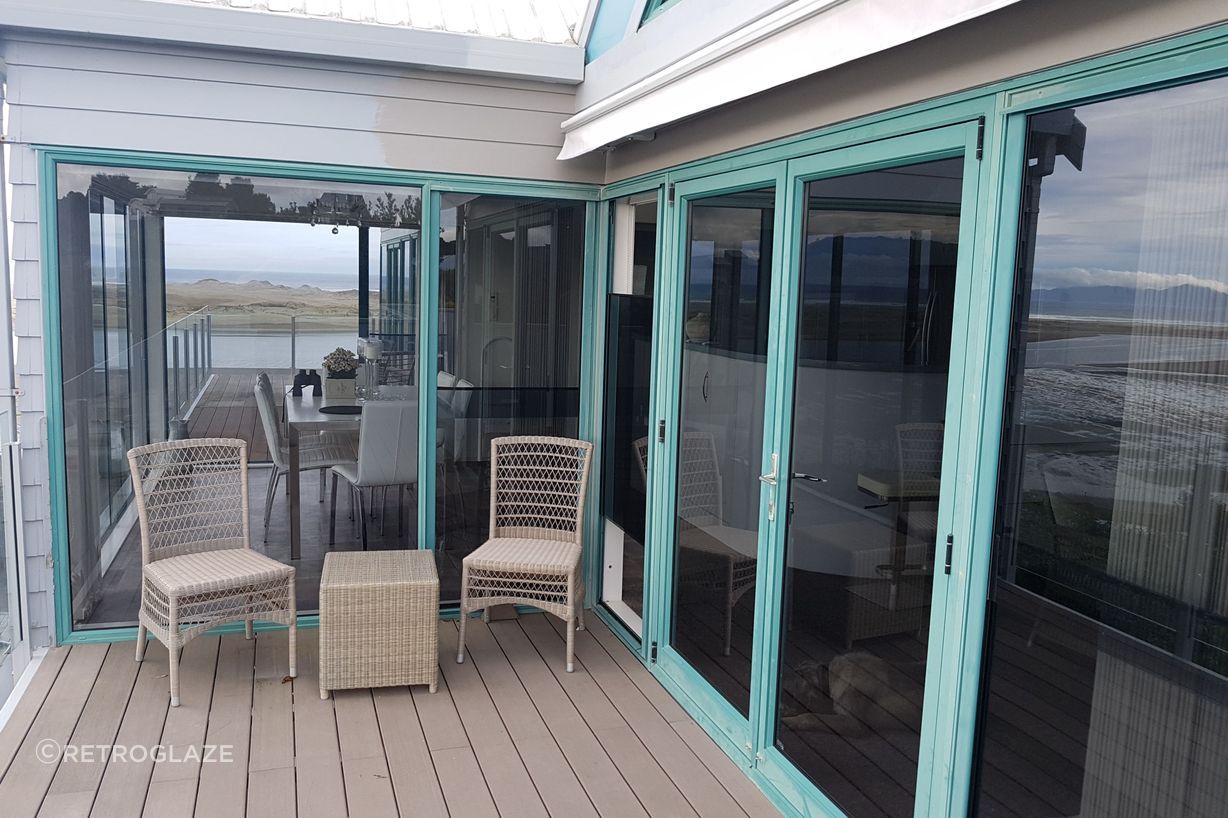Stay cool this summer - How choosing the right double glazing provides year-round comfort.

The hidden challenge of Solar Heat Gain
As more homeowners invest in higher levels of insulation, whether in new builds or retrofitted homes, they often find themselves facing high energy bills in summer. Solar heat (from the Sun) gets trapped inside these well-insulated homes, turning sunny days into a challenge, leading to frequent use of heat pumps or fans to cool down.
According to Stats NZ and the Building Research Association of New Zealand (BRANZ), a comfortable indoor temperature is between 20-25°C. However, Stats NZ’s 2018 General Social Survey found that 36% of summer indoor temperatures were 25°C or higher, making one-third of New Zealand homes uncomfortably warm due to excessive solar heat gain.
Auckland Council’s Climate Action Solutions team lead, Adrian Feasey, highlights that while insulation is often blamed for heating up new homes, it’s actually the windows that let in super-heated sunlight causing the real problem (Fitzgerald, 2024). But it’s not just new home builds. As more homeowners invest in retrofitting insulation in their existing homes (ceiling, walls, underfloor), solar heat gain is becoming a hot topic.
The importance of choosing the right double glazing
If windows letting in super-heated sunlight are the problem, then choosing the right double glazing solution is essential.
Homeowners are often disappointed when double glazing fails to meet expectations, often due to limited knowledge of available options or decisions driven mainly by cost, leading to discomfort at home.
Retrofitting or replacing existing windows with double glazing may seem like a good step, but choosing the right double glazing solution for each individual home is key to achieving comfort.
Some homeowners purchase standard double glazing expecting it to help reduce overheating, but this isn’t always the case. Standard double glazing consists of two panes of clear glass separated by a sealed, air-filled space.
This improves the insulation, retaining more warmth when compared to single glazing. However, clear glass easily allows heat to radiate through. While this may be helpful on North-facing windows in Winter, it could lead to problems in other seasons.
In summer, particularly in homes with large west or east-facing windows, this can lead to a “greenhouse effect” where the home absorbs and traps solar heat, contributing to overheating. Rather than reducing overheating, standard double glazing may unintentionally contribute to excessive indoor heat.
Learn more about how the Sun’s path affects home comfort at retroglaze.co.nz/harnessing the sun for home comfort., or contact your local retroGLAZE® expert for tailored advice: www.retroglaze.co.nz/contact.

What about high-performing low-e double glazing – will that be the right solution?
The answer to that depends on the type of low-e double glazing you choose.
To achieve consistent, comfortable indoor temperatures throughout the year, high-performing low-e (low-emissivity) double glazing is now a required in all new homes. Low-e glass has a special coating that is invisible to the human eye. This coating is made up of microscopic layers that combine to achieve a specific purpose within the double glazing. While all low-e double glazing products provide increased insulation, some are designed to let in high levels of visible light and solar heat (“passive low-e double glazing”), while others are designed to reduce solar heat gain yet allow a healthy level of visible light in (“solar control low-e double glazing”).
Buyer beware — not all low-e glass is the same! Different low-e double glazing products have different levels of performance. Therefore, it is important to ensure you get good advice that enables you to select the right double glazing solution for your home.
Passive Low-E Double Glazing: Allows high levels of visible light and solar heat into the home, making it ideal for homes with smaller windows, or rooms with North-facing windows having external eaves. Well-designed eaves provide shading during Summer and allow the Sun’s warmth to radiate inside in Winter. Passive low-e double glazing will retain warmth in the home, providing a big benefit during colder months. However, in rooms with large East or West-facing windows (or North-facing windows without eaves), it may contribute to significant overheating.
Solar Control Low-E Double Glazing: Ideal for homes with large west, or east facing windows. Solar control low-e double glazing allows healthy levels of natural daylight, while reflecting a high proportion of solar heat away. This solution helps maintain indoor comfort by retaining warmth generated inside the home while minimizing excessive heat from the Sun, ensuring a balanced indoor environment throughout the year.
Passive and Solar Control Low-E Double Glazing


Do you have some rooms that would suit solar control low-e double glazing and other rooms that would suit passive low-e double glazing?
If the right range of low-e double glazing products are available and care is taken, it is possible to select the most suitable option for each area of your home.
Retrofit Double Glazing with retroGLAZE®
retroGLAZE® SuperTherm™ Low-E double glazing offers homeowners a tailored range of solutions designed to keep their homes comfortable all year round.
Every retroGLAZE® SuperTherm™ double glazing solution features two custom-selected panes of glass, including a high-performance low-e pane, separated by a warm-edge silicone SuperSpacer™ that reduces heat transfer from the external pane to the internal pane. The space formed between these panes is filled with argon gas, which works more effectively than air at reducing the movement of heat between the indoors and outdoors.
The SuperTherm™ double glazing range includes:
· SuperTherm Warm™ - Ideal for rooms with limited sun exposure or smaller windows, SuperTherm Warm™ offers a passive low-e double glazing solution that lets in a healthy level of natural daylight and solar warmth, while keeping indoor heat from escaping
· SuperTherm Cool™ - Designed for spaces with high sun exposure, SuperTherm Cool™ reflects excess solar heat to help keep rooms cool without sacrificing natural daylight. It provides the comfort of solar control without the need for dark tints, allowing in plenty of natural light even on overcast days. On cooler days, SuperTherm Cool™ helps retain indoor warmth, reducing the need for heat pumps.
· SuperTherm Protect™ - For ultimate performance, SuperTherm Protect™ offers all the benefits of SuperTherm Cool™ with the addition of sound-control laminated glass, making it perfect for reducing noise and protecting furniture from fading. It’s a comprehensive choice that ensures year-round comfort and enhanced peace and quiet.
Every SuperTherm™ double glazing solution provides high clarity, allowing healthy levels of natural daylight to brighten rooms while keeping outdoor views uninterrupted, giving you the perfect balance of comfort, style, and energy efficiency.
retroGLAZE® double glazing experts assess each home's individual needs, presenting homeowners with a proposal custom built for their home comfort.
To learn more about the SuperTherm™ range of low-e double glazing solutions, customised for home comfort, click here: retroGLAZE<sup>®</sup> SuperTherm™ low-e double glazing or contact your local retroGLAZE<sup>®</sup> expert for tailored advice: www.retroglaze.co.nz/contact.

Create a healthier home with retroGLAZE® double glazing and enhanced ventilation.
When upgrading to low-e double glazing, optimizing your home’s window layout can be a game-changer for airflow, humidity control, and overall comfort. While high-performing double glazing, like the retroGLAZE® SuperTherm™ range, helps manage solar heat gain, the layout and design of your windows also play a critical role in maintaining a comfortable and healthy indoor environment.
Retrofit Double Glazing or Replacement Windows and Doors provide the perfect opportunity to investigate changing window layouts to enhance natural airflow. By strategically placing opening windows, you can encourage cross-ventilation, allowing fresh air to circulate effectively throughout your home. This airflow not only helps cool rooms in Summer but also reduces indoor humidity (water vapour in the air), minimizing condensation on those crisp Winter mornings. With improved ventilation, you’ll enjoy better indoor air quality and less reliance on cooling systems like heat pumps and fans, ultimately leading to lower energy bills.
Redesigning window layouts (where possible) to capture breezes and reduce humidity, combined with high-performing SuperTherm™ low-e double glazing, creates a comfortable, healthy, and energy-efficient home year-round.


